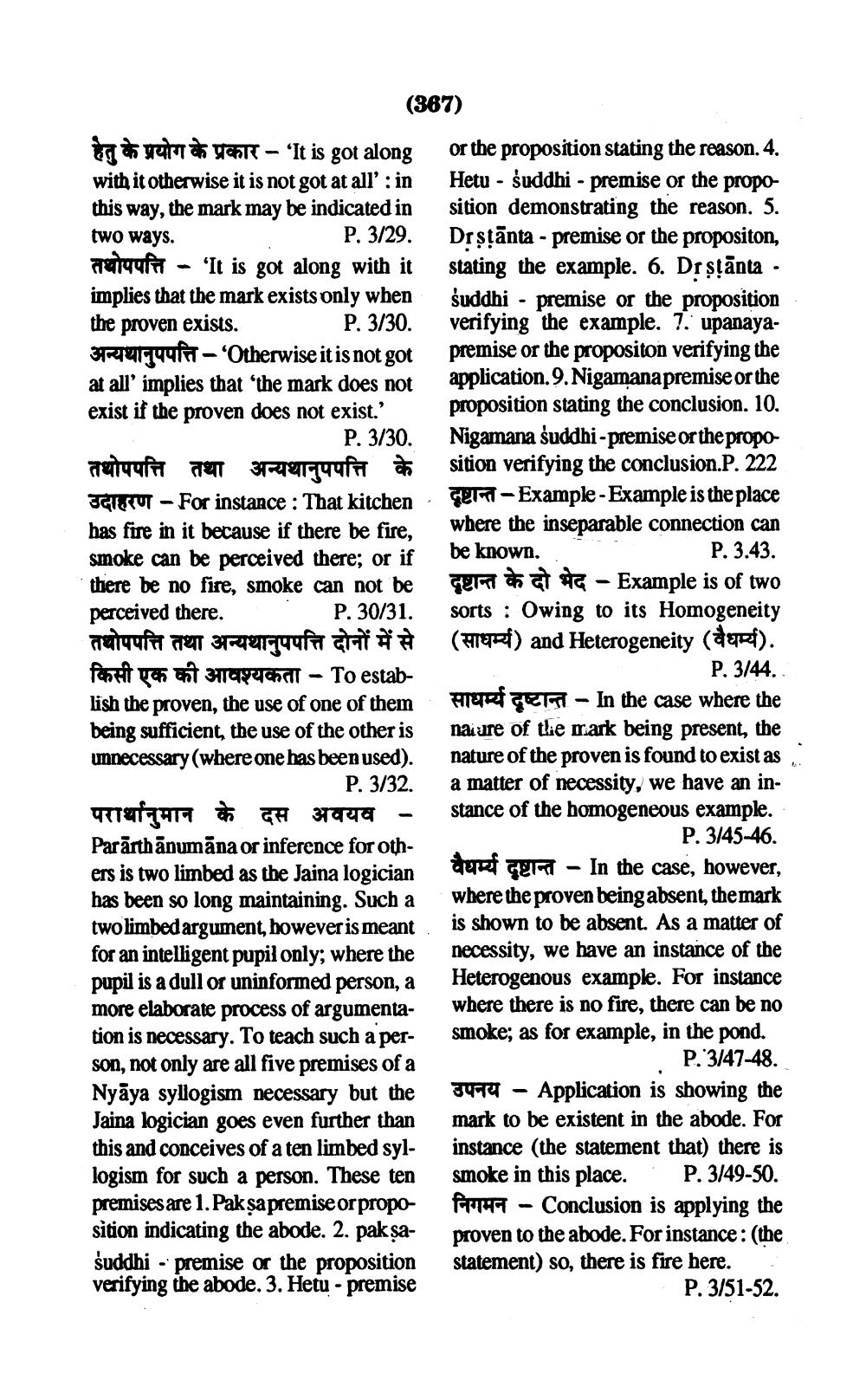________________
(367)
हेतु के प्रयोग के प्रकार - ‘It is got along with it otherwise it is not got at all' : in this way, the mark may be indicated in two ways. P. 3/29. तथोपपत्ति - 'It is got along with it implies that the mark exists only when the proven exists. P. 3/30. अन्यथानुपपत्ति - ' Otherwise it is not got at all' implies that 'the mark does not exist if the proven does not exist.' P. 3/30.
तथोपपत्ति तथा अन्यथानुपपत्ति के
3- For instance: That kitchen has fire in it because if there be fire, smoke can be perceived there; or if there be no fire, smoke can not be perceived there. P. 30/31. तथोपपत्ति तथा अन्यथानुपपत्ति दोनों में से fentit yan ant 3-ayachal To establish the proven, the use of one of them being sufficient, the use of the other is unnecessary (where one has been used). P. 3/32.
परार्थानुमान के दस अवयव
-
-
Pararthānumāna or inference for others is two limbed as the Jaina logician has been so long maintaining. Such a two limbed argument, however is meant for an intelligent pupil only; where the pupil is a dull or uninformed person, a more elaborate process of argumentation is necessary. To teach such a person, not only are all five premises of a Nyaya syllogism necessary but the Jaina logician goes even further than this and conceives of a ten limbed syllogism for such a person. These ten premises are 1. Pak sa premise or proposition indicating the abode. 2. pakṣasuddhi-premise or the proposition verifying the abode. 3. Hetu - premise
or the proposition stating the reason. 4. Hetu - suddhi - premise or the proposition demonstrating the reason. 5. Drṣṭānta - premise or the propositon, stating the example. 6. Dṛṣṭānta - suddhi - premise or the proposition verifying the example. 7. upanayapremise or the propositon verifying the application. 9.Nigamana premise or the proposition stating the conclusion. 10. Nigamana suddhi-premise or the proposition verifying the conclusion.P. 222 GET-Example - Example is the place where the inseparable connection can be known. P. 3.43.
दृष्टान्त के दो भेद - Example is of two sorts Owing to its Homogeneity (साधर्म्य) and Heterogeneity (वैधर्म्य).
P. 3/44. साधर्म्य दृष्टान्त - In the case where the nature of the mark being present, the nature of the proven is found to exist as a matter of necessity, we have an instance of the homogeneous example. P. 3/45-46.
वैधर्म्य दृष्टान्त In the case, however, where the proven being absent, the mark is shown to be absent. As a matter of necessity, we have an instance of the Heterogenous example. For instance where there is no fire, there can be no smoke; as for example, in the pond. P. 3/47-48.
उपनय Application is showing the mark to be existent in the abode. For instance (the statement that) there is smoke in this place. P. 3/49-50. निगमन - Conclusion is applying the proven to the abode. For instance: (the statement) so, there is fire here.
P. 3/51-52.
-




